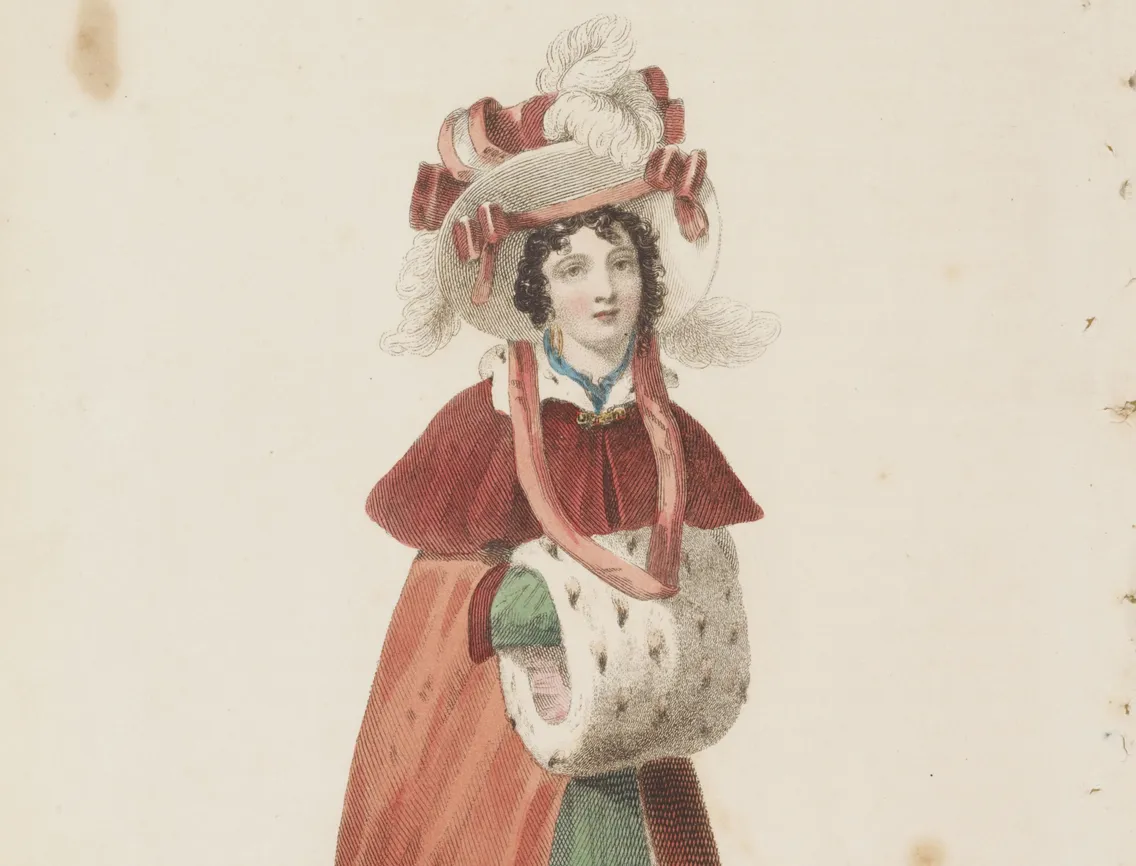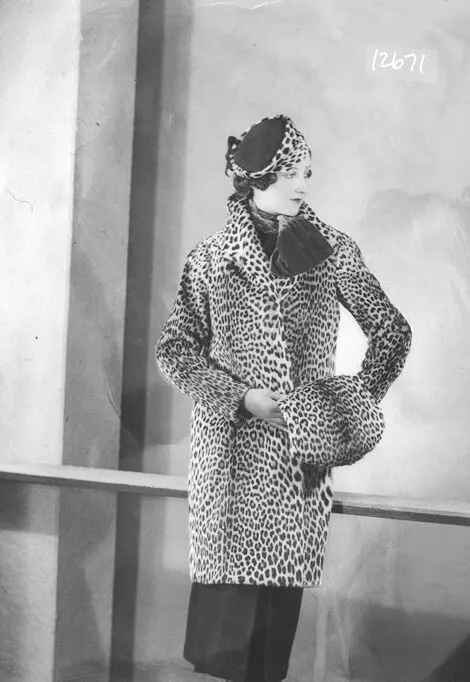02 January 2018 — By Beatrice Behlen
A history of muffs: A forgotten fashion accessory
Women's winter fashion once featured a curious and old-fashioned cylindrical handwarmer: the muff. We examine the history and design of these odd accessories, as represented in the museum's collection.
The muff: An accessory worth reviving?
There are not many garments or accessories I wish would make a comeback. I’m glad I don’t have to totter about in hobble skirts, swim in woollen bathing suits or sport spats – well, the latter could be useful occasionally. But maybe we should orchestrate a return of the muff – no sniggering at the back!

Two muffs, both dyed musquash, 1860–1870, owned by Princess Louisa.
Royal warmth: Princess Louise and her luxurious fur muffs
Trawling through our collection we looked for now-forgotten objects formerly used by Londoners to ward off the cold. This includes one of two fur muffs that belonged to Queen Victoria’s daughter, Princess Louise (1848–1939), supplied by W.C. Williams of 102 Regent Street.
I wonder if Louise bought the muffs in anticipation of her move to Canada, when her husband John Campbell became Governor General of Canada in 1878. The Princess was definitely photographed wearing warm clothes, albeit in front of a studio winter landscape complete with – presumably fake – snow.
The fur handwarmer from the Canadian photo is somewhat larger than our muffs, which are more similar in size to another picture below, taken more than 10 years earlier. (One gets the impression that it was inconceivable for women to be photographed without them holding – or holding onto – something.)

A photograph from 1864 showing Princess Louise wearing a muff. ( 66.79/19a )
I am quite intrigued by this accessory. We have quite a few muffs in the collection, mostly of the fur or feather variety – most yet to be photographed. So, I’ve selected some of my favourite pictures of muffs from the museum collection. Costume historian Pat Poppy’s done a complete muff chronology, with an excellent account of the early history, and the somewhat obscure origins of the term in the last quarter of the 16th century.

A woodcut depicting a woman with a muff, 1598, by Cesare Vecellio.
From women to men: The evolution of muff fashion
The most prolific depicter of muffs was the Czech engraver Wenceslaus Hollar who came to England in 1637 and published several works recording the clothing of women worldwide. Quite a few depict women with their by then quite large muffs, seemingly exclusively made of fur.
Originally a garment carried by women, the men soon jumped on the trend, not least by Samuel Pepys, always an early adopter. On Sunday 30 November 1662, Pepys noted the “bitter cold” and decided to help himself to one of his wife’s accessories to keep warm on his travels. He reported: “This day I first did wear a muffe, being my wife’s last year’s muffe, and now I have bought her a new one, this serves me very well.”
Muffs continued to be worn by both sexes throughout the 18th century. Carried by men, they were often taken as indicators of effeminacy, frequently seen as a result of imitating the dreaded French.

Man carrying a muff, 1678.
Muffs and masculinity: 18th century fashion debates
Mr Jessamy, a character in Isaac Bickerstaffe’s libretto for the comic opera Lionel and Clarissa (1768) is a case in point. Jessamy, the son of Col. Oldboy (oh yes!) was brought up – and adopted the name and airs of – his maternal uncle Lord Jessamy. Now in his early 20s, he “mixes all his wine with water”, according to the colonel a sure sign of weakness.
“A coxcomb, a fop, / A dainty milk-sop...Who shrugs and takes snuff, / And carries a muff”
Jessamy’s room “is like a perfumer’s shop, with wash balls [soap], paste and pomatum [scented hair ointment]”. Sensing his father’s distaste, Jessamy asks what the problem is, which leads to the colonel bursting into song, listing what he hates and detests: “A coxcomb, a fop, / A dainty milk-sop; / Who, essenc'd and dizen'd [decked out in fine clothes] from bottom to top, / Looks just like a doll for a milliner's shop. / A thing full of prate, / And pride and conceit; / All fashion, no weight; / Who shrugs and takes snuff, / And carries a muff; / A minikin, Finiking, / French powder-puff: / And now Sir, I fancy, I've told enough.”
Col. Oldboy wouldn’t have liked the “amant transi” or “bashful lover” depicted in this 1735 print below, but might have agreed with the slightly saucy inscription. The boy pictured is told to give up his 'sleeve': "Believe me, to better brave a cruel season / Go, run to the bosom of your belle to warm yourself."
The golden age of muffs: 18th and 19th century trends
Judging from the many caricatures featuring muffs produced during the 1780s, that decade must have seen one of the major peaks in muff size. It seems that towards the end of the 18th century, muffs were again primarily confined to women. During the 1790s, particularly splendid examples can be found in Heideloff’s Gallery of Fashion. In the early 19th century the journal Ackerman’s Repository of Arts features muffs extensively, the ermine (or mock ermine) variety apparently a favourite.

Gertie Millar photographed as 'Dancing Mistress' Nancy Joyce, 1912.
From the 1830s until the First World War, the size, but not the popularity of the muff is diminished. Larger examples can again be found in the second decade of the 20th century, such as the muff that forms part of Gertie Millar’s costume for her role as Nancy Joyce in the ‘Dancing Mistress’, in which she finds fortune and happiness in Switzerland.
Muffs, particular the smaller ones, demand a stance that suggests demureness, which is at odds with the jumping dollies of the 1960s and the striding amazons of the 1970s. Even during the fur-loving 1980s muffs only make a rare appearance. If they do, they are of the large variety, massive objects of conspicuous consumption.
So, what about a comeback? I now think maybe not. While I always like the idea of striking a pose, and a muff, particularly a big one, is good for that, it probably would not fit in particularly well with my day-to-day life. I am also uneasy about its long association with fur. I will focus on enjoying images of the many fabulous muffs produced in the past.
Beatrice Behlen is Senior Curator Fashion and Decorative Arts at London Museum.








